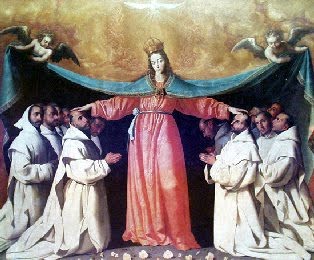 After MANY years of personal study of Carthusian spirituality, including a very generous amount of photostatic copies given to me from a former Carthusian, and an increasing openness from the Order itself on internet sites and published writings, recently I have finally incorporated into my own praying of the Divine Office, some of the Carthusian chant, at least to the best of my limited non-Carthusian capabilities. Chanting, Carthusian style, is not only pleasing to the ears when listening to it on a CD, but I have also discovered that by using it for my own prayer, it can also open wide the temple doors of the soul for edifying interior delights.
After MANY years of personal study of Carthusian spirituality, including a very generous amount of photostatic copies given to me from a former Carthusian, and an increasing openness from the Order itself on internet sites and published writings, recently I have finally incorporated into my own praying of the Divine Office, some of the Carthusian chant, at least to the best of my limited non-Carthusian capabilities. Chanting, Carthusian style, is not only pleasing to the ears when listening to it on a CD, but I have also discovered that by using it for my own prayer, it can also open wide the temple doors of the soul for edifying interior delights.Robin Bruce Lockhart, author of, “Halfway to Heaven: The Hidden Life of the Carthusians” devotes a couple of paragraphs in this book to the Carthusian chant. He writes:
“The Carthusian day begins at an hour when much of the world is carousing or just starting to sleep off the excesses of a materialistic day. At 11:45 p.m. the monk rises from his austere bed to say the Little Office of Our Lady, then, leaving his cell, he wends his way through the cloisters to the monastery church. The choir stalls fill up, the professed monks in their white habits, the Novices in their black cloaks. The church is in almost total darkness, the only light coming from the sanctuary lamp and the shaded low lamps in the choir. After a period of deep silence the chanting of the long night vigil of Matins and Lauds begins. The chanting carries, in its cadences, soaring praises of God, then sinks down to lowly supplication. At times it almost seems to break into a sobbing of repentance before pouring itself out in heartfelt whispers of love. The singing, steeped in Gregorian antiquity, has a holiness all its own, and as a sung office proceeds it is impossible not to sense how the fervour of the Psalms takes over, enveloping not only the monks but also the listener in the tribune.”
A “tribune” is a part of the church building used to accommodate visitors who will witness the chanting of the Offices, although permission to enter the Charterhouse is rare.
Robin Bruce Lockhart continues:
“The purity of the Carthusian chant… has been jealously maintained for centuries; slower, lower-pitched and less melismatic than the Benedictine chant, it is considered more deeply spiritual by those who have heard both.”
And then follows these astonishing words:
“The seventeenth-century Cardinal Bona, who undertook vast research into liturgy, records that it was the Carthusian chant which Christ recommended in His revelations to Saint Bridget, the patron saint of Sweden.”
And the book finalizes the subject of the Carthusian chant with these words:
“No organ or other musical instrument accompanies the chant, and in his liturgy the Carthusian seems to be projected by its sacred power to a point where eternity meets his temporal existence.” And that particular sentence is footnoted with a personal note from the author: “Even Benedictines, renowned for their singing, with whom I have spoken admit to the greater spirituality of the Carthusian chant.”
Pope Pius XI, wrote in the Apostolic Constitution, Umbratilem, these words: “At fixed hours of the day and night they assemble in the sacred temple, not merely to chant the divine office without modulation, as is the custom in other Orders, but to sing the whole of it ‘viva et rotunda voce’ -- in lifelike, moulded tones - according to the very ancient Gregorian melodies of their choir books, and with the accompaniment of no musical instrument. How should God Who is so merciful, fail to grant the prayers of those most pious brethren who thus raise their voices to Him in behalf of the Church and of sinners who need conversion?”
Two popular Carthusian chant CD’s on the market are: “In the Silence of the Word” recorded by the monks at Parkminster; and the other is, “Into Great Silence: Office of the Night” which is the soundtrack to Philip Gröning’s movie about life at La Grande Chartreuse. In the former, all the chants are in Latin and the Readings are recited in English. In the latter, the chants are also in Latin and the Readings are chanted recto tono in French. The latter also has a more realistic “as if you were really there” approach to it because various changes in body posture can be heard as well as sounds like the clearing of throats and coughing.











